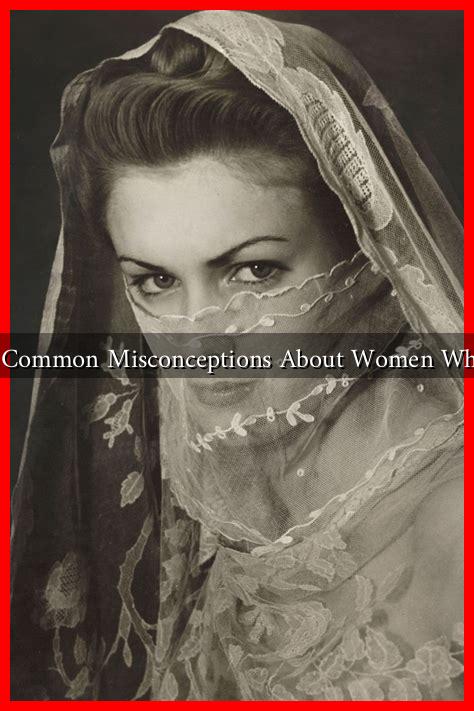-
Table of Contents
- What Are the Common Misconceptions About Women Who Wear Veils?
- Understanding the Veil: Cultural and Religious Significance
- Common Misconceptions
- 1. Veils are a Sign of Oppression
- 2. All Women Who Wear Veils Are the Same
- 3. Veils Are Anti-Feminist
- 4. Veils Are a Symbol of Terrorism
- Case Studies and Real-Life Examples
- Conclusion: Embracing Diversity and Understanding
What Are the Common Misconceptions About Women Who Wear Veils?
The practice of wearing veils, whether in the form of hijabs, burqas, or other types of head coverings, has been a subject of intense debate and misunderstanding. Many people hold misconceptions about women who choose to wear veils, often leading to stereotypes and discrimination. This article aims to clarify these misconceptions and provide a deeper understanding of the reasons behind this practice.
Understanding the Veil: Cultural and Religious Significance
Veils are worn by women in various cultures and religions, most notably in Islam, but also in Christianity, Judaism, and other faiths. The reasons for wearing a veil can be multifaceted, including:
- Religious Obligation: For many Muslim women, wearing a hijab is a religious duty, rooted in the Quran and Hadith.
- Cultural Identity: In some cultures, veiling is a tradition that signifies cultural heritage and identity.
- Personal Choice: Many women choose to wear veils as a form of self-expression or personal empowerment.
Common Misconceptions
Despite the diverse reasons for wearing veils, several misconceptions persist. Here are some of the most common ones:
1. Veils are a Sign of Oppression
One of the most prevalent misconceptions is that women who wear veils are oppressed or forced to do so. While it is true that some women may face coercion, many choose to wear veils voluntarily. A study by the Pew Research Center found that 62% of Muslim women in the U.S. who wear hijabs do so by choice, reflecting their personal beliefs and values.
2. All Women Who Wear Veils Are the Same
Another misconception is that all women who wear veils share the same beliefs or experiences. In reality, the reasons for wearing a veil can vary widely among individuals. For example:
- Some may wear it as a form of modesty.
- Others may see it as a political statement.
- Some may wear it for cultural reasons, while others may do so for spiritual ones.
3. Veils Are Anti-Feminist
Many people assume that wearing a veil is inherently anti-feminist. However, numerous feminist scholars and activists argue that the choice to wear a veil can be a feminist act in itself. For instance, in her book “Muslim Women and the Politics of Feminism,” author and activist, Margot Badran, discusses how some women reclaim their agency through the act of veiling.
4. Veils Are a Symbol of Terrorism
In the wake of global terrorism, particularly after events like 9/11, veils have been unfairly associated with extremism. This stereotype ignores the fact that the vast majority of Muslim women are peaceful and do not support violence. According to a report by the Institute for Social Policy and Understanding, 94% of American Muslims reject extremism.
Case Studies and Real-Life Examples
To further illustrate these misconceptions, consider the following examples:
- Malala Yousafzai: The Nobel Prize-winning activist wears a hijab as a symbol of her faith and identity, advocating for girls’ education worldwide.
- Linda Sarsour: A prominent activist in the Women’s March, Sarsour wears a hijab as a statement of her identity and empowerment, challenging stereotypes about Muslim women.
Conclusion: Embracing Diversity and Understanding
Understanding the complexities surrounding women who wear veils is crucial in combating stereotypes and fostering inclusivity. The choice to wear a veil can be deeply personal and varies significantly among individuals. By recognizing the diversity of experiences and motivations behind veiling, society can move towards a more nuanced understanding of cultural and religious practices.
In summary, it is essential to challenge the misconceptions surrounding women who wear veils. By doing so, we can promote a more inclusive society that respects individual choices and recognizes the rich tapestry of cultural identities. For further reading on this topic, consider exploring resources from organizations like the Institute for Social Policy and Understanding.

